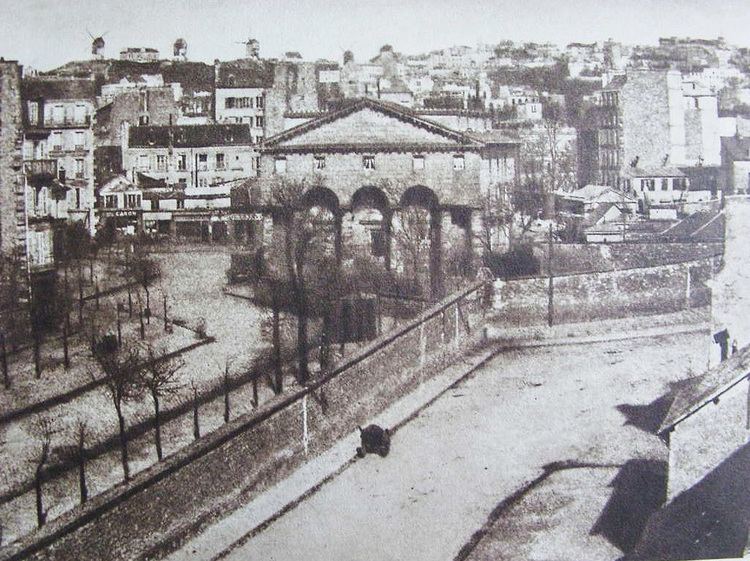 | ||
Similar Rotonde de la Villette, Barrière d’Enfer, Place Denfert‑Rochereau, Place de la Nation, Wall of Charles V | ||
The Wall of the Ferme générale was commissioned by Antoine Lavoisier and built between 1784 and 1791 by the Ferme générale (General Farm), the corporation of tax farmers. It was one of the several city walls of Paris built between the early Middle Ages and the mid 19th century. It was 24 kilometers long and roughly followed the route now occupied by line 2 and line 6 of the metro. It crossed the districts of the Place de l'Étoile, Batignolles, Pigalle, Belleville, Nation, the Place d'Italie, Denfert-Rochereau, Montparnasse and the Trocadéro.
Contents
History
Unlike earlier walls, the Farmers-General Wall was not aimed at defending Paris from invaders but intended to ensure the payment of a toll on goods entering Paris ("octroi") to the Ferme générale. The wall's tax-collection function made it very unpopular: it was said "Le mur murant Paris rend Paris murmurant" ("The wall walling Paris keeps Paris murmuring"). There was also an epigram:
Pour augmenter son numéraire (To increase its cash)
Et raccourcir notre horizon (And to shorten our horizon),
La Ferme a jugé nécessaire (The Farm judges it necessary)
De mettre Paris en prison (To put Paris in prison).
The architect Claude Nicolas Ledoux designed its 62 toll barriers in a neo-classic or even classical style. The architectural value of these buildings, "dens of the Tax Department metamorphosed into palaces with columns" according to Louis-Sébastien Mercier, highlighted the oppression which the wall represented for Parisians. The wall was bordered by a boulevard outside and a chemin de ronde (a raised protected walkway) inside, except between the barrière d'Italie (now the Place d'Italie) and the barrière d’Enfer (now the Place Denfert-Rochereau) where the Boulevards of Gobelins, Saint-Jacques and d'Enfer replaced the chemin de ronde inside the wall.
In 1787, Loménie de Brienne, Minister for Finance, worried about the very high cost of the work and considered stopping construction but never actually stopped it because the work was too far advanced.
The toll on goods was removed on 1 May 1791 in the early stages of the French Revolution, but was restored in 1798 by the Directory. The perception of the tolls improved under Napoleon. The majority of the toll barriers were destroyed during the expansion of Paris in 1860. At the same time the octroi that had been collected at the wall was abolished.
Current remains
Some portions of the wall still exist, such as the rotunda of the Barrier of La Villette (now Place de Stalingrad), the Barrière du Trône (now Place de la Nation), the Barrière d'Enfer (now Place Denfert-Rochereau), and the rotunda of Parc Monceau. The wall itself was replaced by the route of the following streets:
